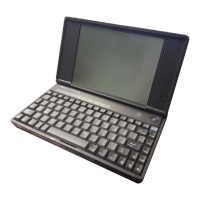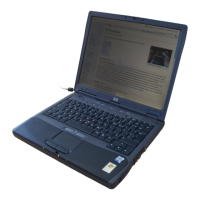Solving Problems with Your Computer
Troubleshooting Techniques
106 Reference Guide
Printing problems
For most printing problems, use the Print Troubleshooter in Windows Help.
If a serial or parallel printer doesn’t print
• Check that you are using a proper cable or cable adapter, and that the printer is on.
• Check for paper in the printer or other printer errors.
• Make sure the printer cable is securely attached at both ends.
If the left edge of printed output is missing
• If the printer you are using is a 600-dpi (dots per inch) printer, try selecting a
compatible printer driver for a 300-dpi printer. For example, for a 600-dpi
HP LaserJet printer, try using the HP LaserJet IIIsi driver (300-dpi). Certain
applications may not work properly with 600-dpi printers.
Serial, parallel, and USB problems
If a serial mouse doesn’t work
• First, make certain you completely followed the manufacturer’s installation
instructions to install the mouse properly.
• Check the port connection to see if it’s loose.
• Check settings in BIOS Setup.
1. Click Start, Shut Down, Restart.
2. When you see the HP logo, press F2 to enter the BIOS Setup utility.
3. From the System Devices menu, check that Serial Port is enabled.
• If you standby and resume, reboot the computer to reenable the mouse.
If a serial modem doesn’t work properly
• In Windows Help use the Modem Troubleshooter.
• Check the port connection to see if it’s loose.
